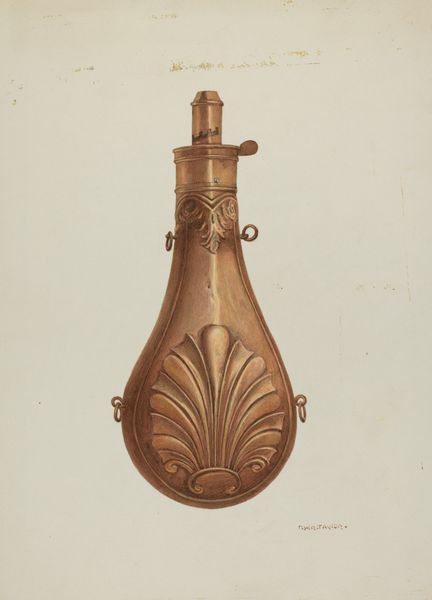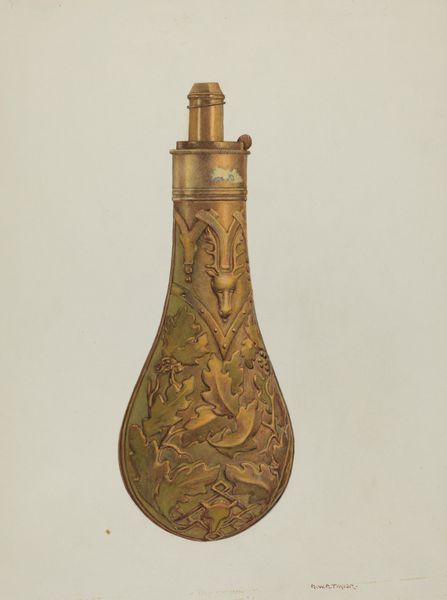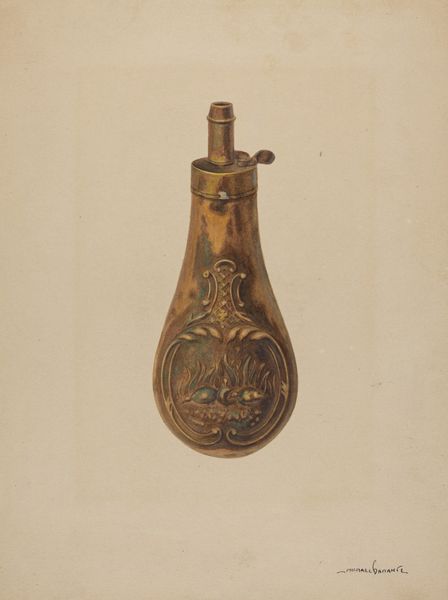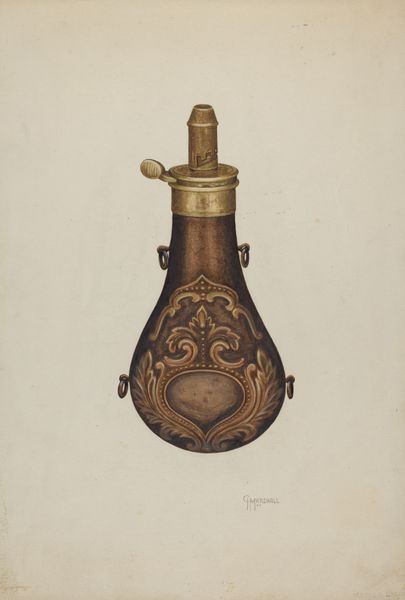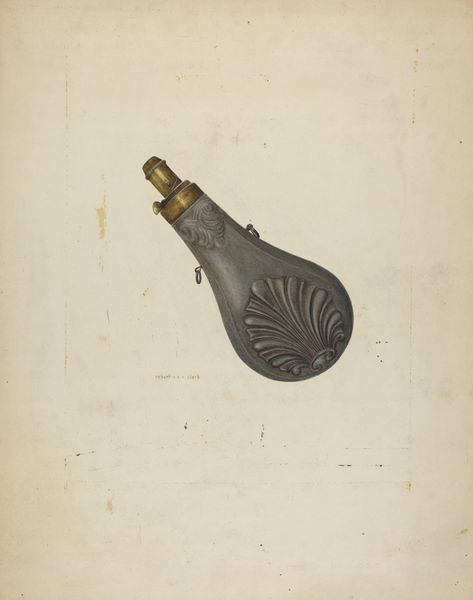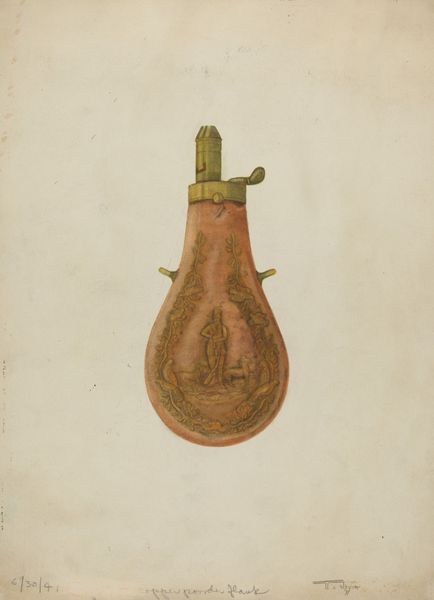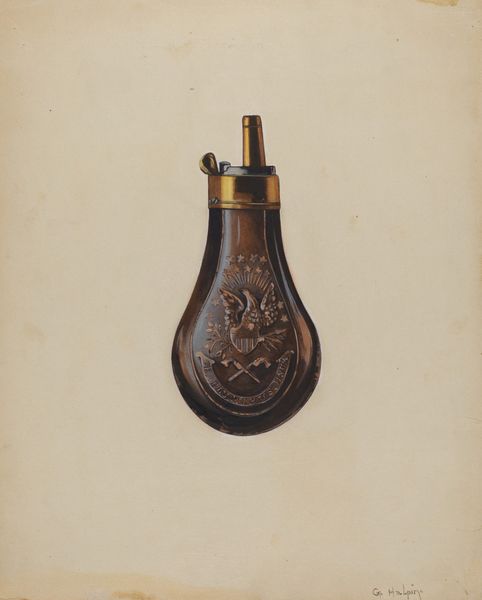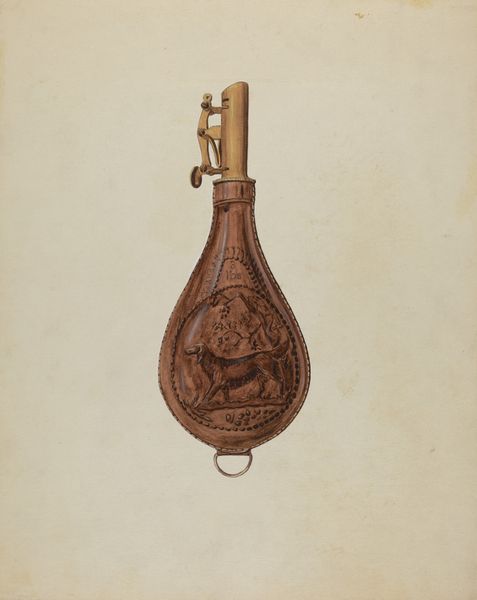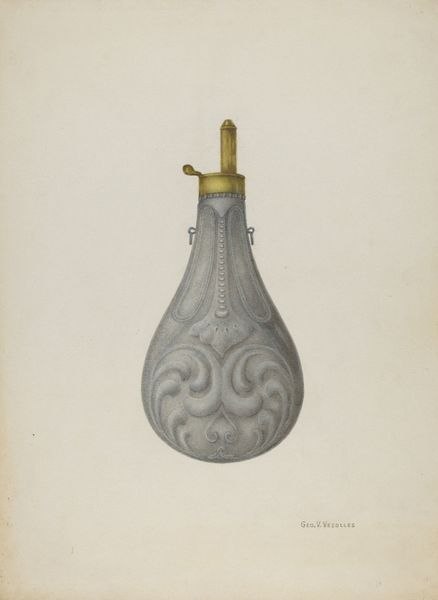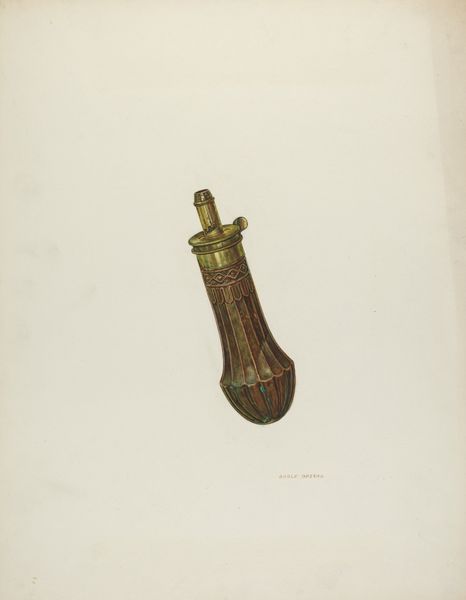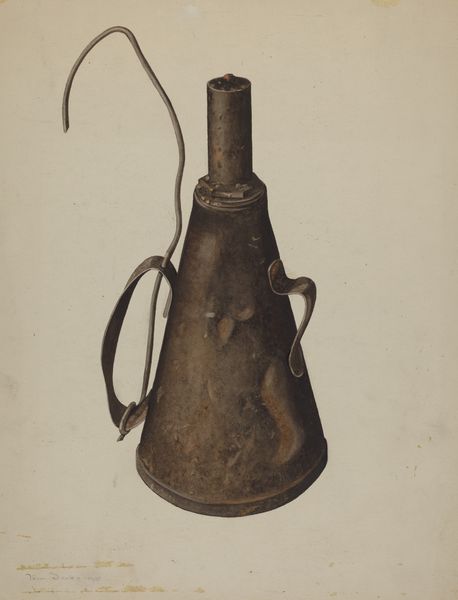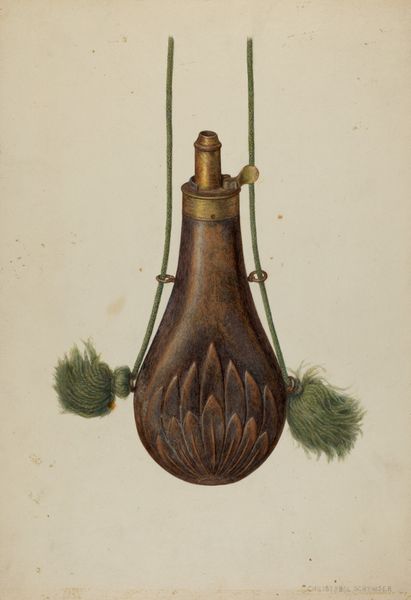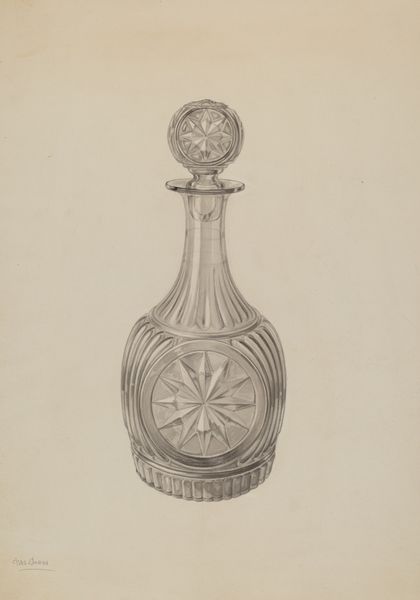
drawing, watercolor
#
drawing
#
watercolor
#
realism
Dimensions: overall: 34.7 x 27.6 cm (13 11/16 x 10 7/8 in.)
Copyright: National Gallery of Art: CC0 1.0
Editor: We’re looking at an intriguing work, "Powder Flask," created sometime between 1935 and 1942, using watercolor and drawing techniques. The artist remains anonymous. There’s something quite delicate about the rendering of such a functional, potentially even aggressive, object. What strikes you about it? Curator: The piece draws attention, initially, by its remarkable fidelity. A formalist approach pushes one to observe the rendering, not just the subject. The artist employed the watercolour medium with skill to emulate the materiality of the powder flask and achieve near-photographic verisimilitude. How does the limited color palette reinforce your initial reading of the work? Editor: I hadn’t thought about that consciously, but now that you mention it, the limited range of browns and muted yellows does create a certain reserve, or coolness. It almost drains the object of its inherent potential for violence, its potential energy, turning it into an object for quiet contemplation. Curator: Precisely. And notice the artist's commitment to realistic modelling with cast shadows. The result transforms an utilitarian object into an abstract formal exercise: how can tone and shading create convincing three-dimensionality? What, indeed, is this object besides a carefully constructed illusion? Editor: So it's less about what the powder flask *is* and more about what it *represents* in terms of artistic skill and formal manipulation? Curator: Exactly! It urges us to consider art as artifice, representation as a constructed reality. The question the painting asks is "can we distinguish representation from reality and how?” Editor: I see your point! Initially, I approached it from the angle of its subject matter, its history. Now, thinking about it as an exercise in representation is giving me a completely different perspective. Thanks! Curator: A close inspection of its aesthetic elements often gives rise to novel interpretations. Thank you.
Comments
No comments
Be the first to comment and join the conversation on the ultimate creative platform.
